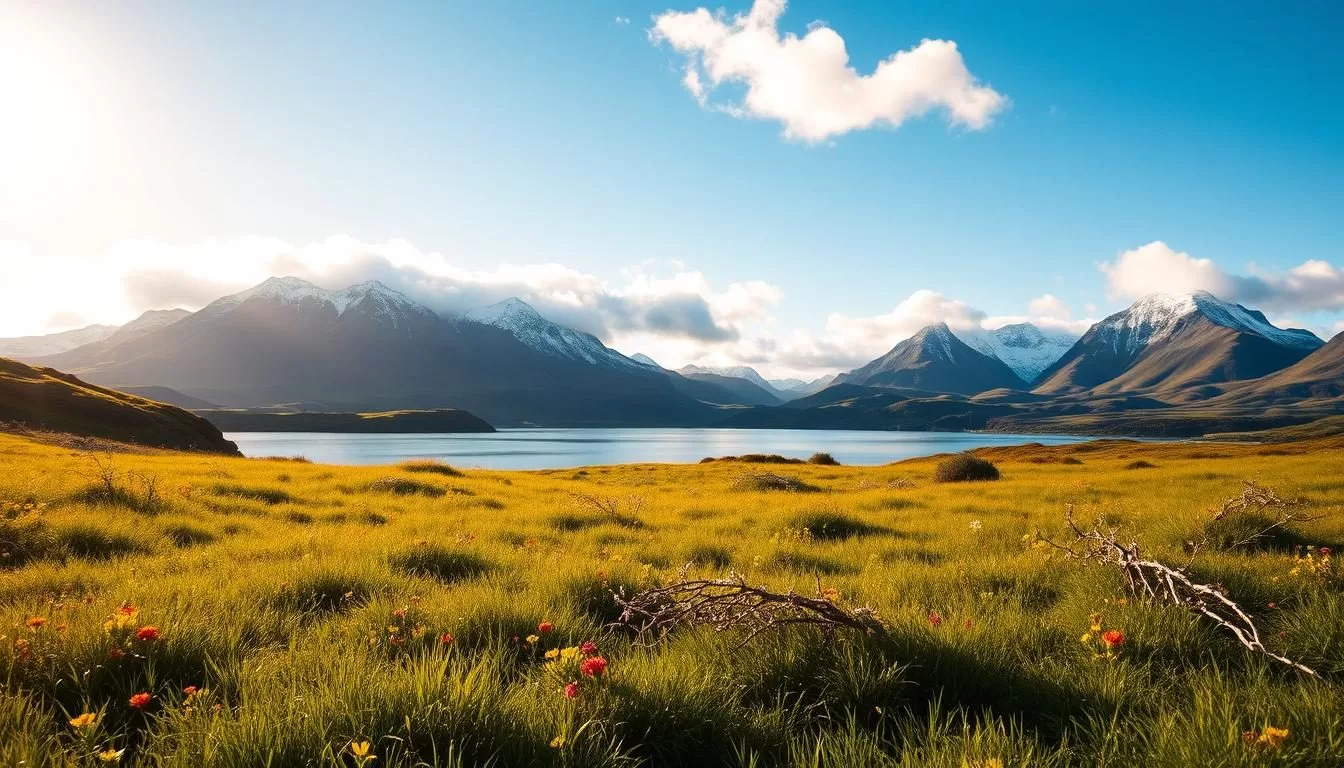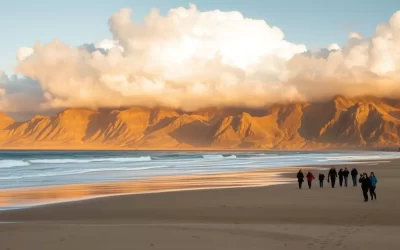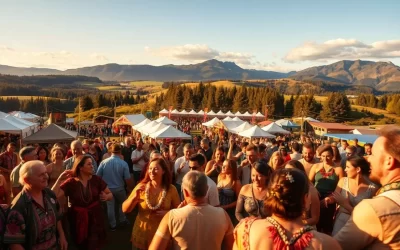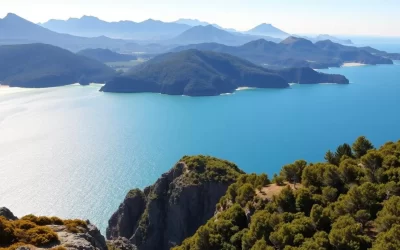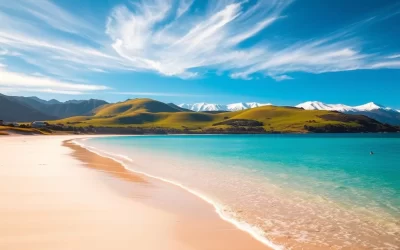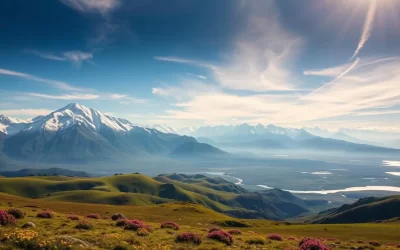With its stunning landscapes and diverse climate, New Zealand offers something for every traveler. From subtropical beaches in the north to snow-capped mountains in the south, this island nation is a paradise for adventurers. The best time to visit depends on your preferences, but the warmer months from October to April are ideal for most activities.
During these months, you can enjoy sunny days perfect for exploring beaches or hiking trails. Spring (October-November) brings mild weather and fewer crowds, making it a great time for outdoor adventures. Summer (December-February) is bustling with energy, while autumn (March-April) offers settled weather and warm water temperatures.
Whether you’re planning a relaxing trip or an action-packed adventure, understanding the weather patterns can help you make the most of your visit. This guide will help you choose the perfect time to explore New Zealand and create unforgettable memories.
Understanding New Zealand’s Diverse Climate
From coastal cities to alpine regions, the weather varies widely across the islands. The surrounding ocean and mountain ranges create unique climate conditions that make every visit memorable. Understanding these patterns is key to planning your ideal trip.
Geographical Influences and the Maritime Effect
The ocean plays a significant role in moderating the temperature, making extreme weather rare. Coastal areas like Auckland experience mild winters and warm summers, with average July temperatures around 59°F (15°C). This maritime influence ensures that even in winter, temperatures rarely drop below freezing.
How Latitude and Mountains Shape Weather Patterns
Latitude and mountain ranges further diversify the climate. The North Island has subtropical tendencies, while the South Island features alpine conditions. For example, Queenstown sees summer temperatures around 70°F (21°C), while receiving only 29 inches of rain annually.
Coastal cities like Wellington and Christchurch enjoy mild weather year-round. Wellington’s temperatures rarely exceed 77°F (25°C) or drop below 39°F (4°C). These regional differences highlight the importance of understanding the climate when planning your visit.
“The diversity of weather across the islands ensures there’s always something new to explore, no matter the season.”
Whether you’re visiting a bustling city or exploring remote mountain trails, knowing the weather patterns can enhance your experience. From the warm beaches of the North Island to the snowy peaks of the South Island, the climate offers endless opportunities for adventure.
New Zealand: Best Months for a Weather-Savvy Trip
Planning your trip around the seasons can make all the difference. The warmer months from October through April are the most popular, offering ideal conditions for outdoor activities and sightseeing. Summer (December-February) is the peak season, with temperatures ranging from 20°C to 30°C, perfect for beach days and festivals.
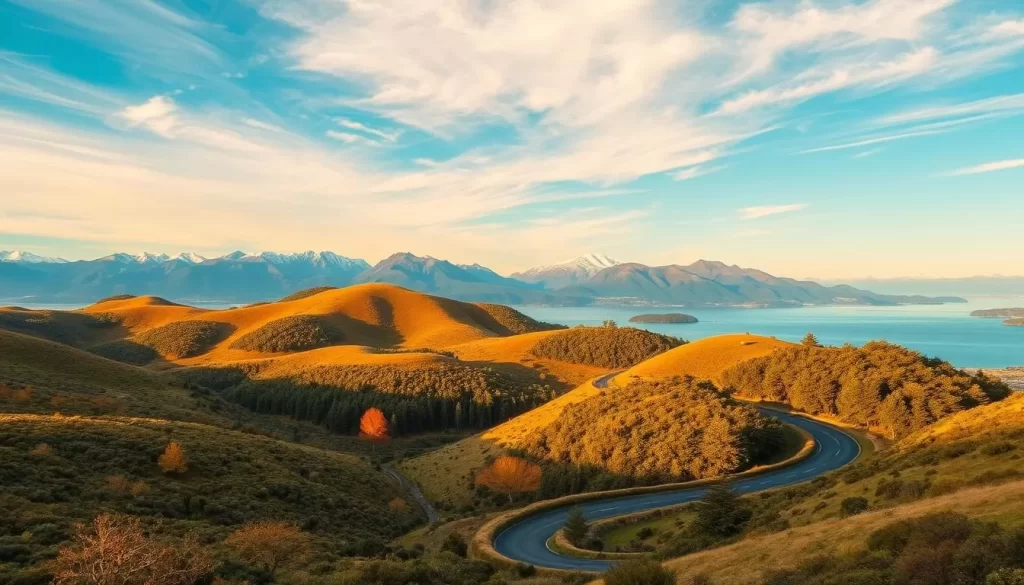
Overview of Ideal Travel Periods
Each season has its own appeal. Spring (September-November) brings mild weather, with temperatures between 8°C and 15°C, and fewer crowds. Autumn (March-May) offers settled weather, with temperatures ranging from 12°C to 20°C, making it a great time for vineyard tours and cultural events.
Winter (June-August) is ideal for snow sports, with temperatures between 1°C and 10°C and the best snow conditions in July and August. Shoulder seasons like spring and autumn are perfect for avoiding crowds while still enjoying pleasant weather.
Comparing Seasonal Trends and Temperature Ranges
Summer is the busiest time, with high temperatures and clear days. It’s also when you’ll find the most tourists and higher accommodation prices. Winter, on the other hand, is quieter and more budget-friendly, with lower prices for flights and hotels.
Here’s a quick comparison of seasonal highlights:
- Summer: Warm weather, festivals like Waitangi Day, and bustling beaches.
- Autumn: Mild temperatures, vineyard tours, and fewer crowds.
- Winter: Snow sports, Matariki Festival, and budget-friendly travel.
- Spring: Blooming landscapes, outdoor adventures, and uncrowded attractions.
By understanding these trends, you can choose the perfect time to visit and make the most of your adventure.
Exploring Seasonal Highlights and Activities
Discover the perfect activities for every season, tailored to your travel preferences. From sunny beach days to snowy slopes, there’s something for everyone year-round. This guide will help you choose the right activities based on the season, ensuring a vibrant and memorable experience.
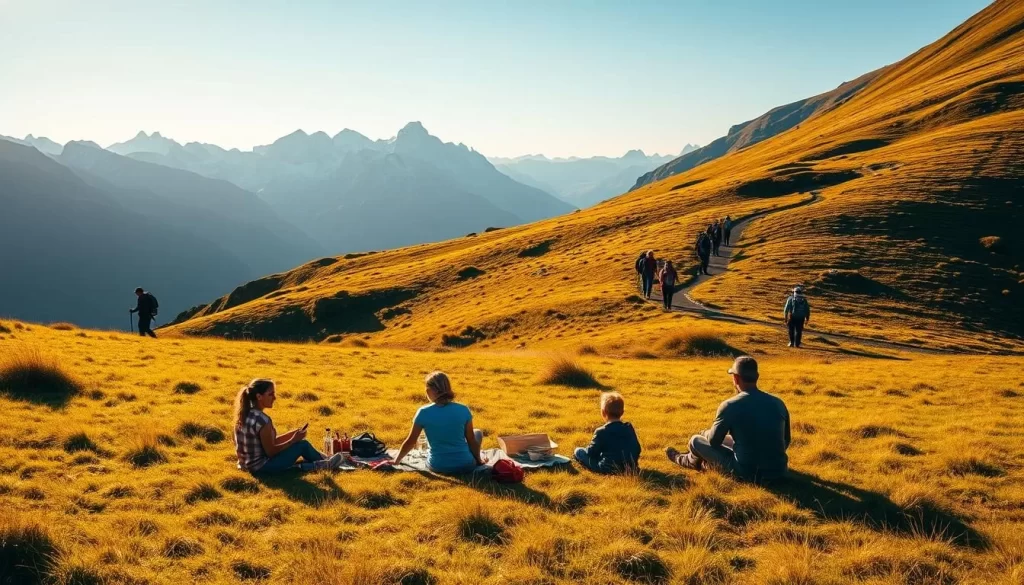
Summertime Beach Escapades and Outdoor Adventures
Summer is the ideal time for beach outings and outdoor fun. Enjoy water sports like kayaking, surfing, and paddleboarding along the coast. Many regions host outdoor festivals and daytime events, perfect for soaking up the sun and enjoying local culture.
For a unique experience, try an outdoor BBQ by the shore or explore hiking trails that offer stunning views. Summer nights are equally lively, with bonfires and stargazing opportunities.
Winter Skiing and Snow-Based Activities
Winter transforms the landscape into a snowy playground. Renowned ski destinations like Queenstown and Wanaka offer skiing and snowboarding for all skill levels. These regions are known as the world’s adventure capitals, providing thrilling activities both day and night.
Beyond skiing, enjoy hot pools and spas to unwind after a day on the slopes. Winter also brings cultural events like the Matariki Festival, celebrating the Māori new year with performances and feasts.
| Season | Activities | Highlights |
|---|---|---|
| Summer | Beach outings, water sports, hiking | Outdoor festivals, stargazing |
| Winter | Skiing, snowboarding, hot pools | Matariki Festival, adventure sports |
Whether you’re planning a summer escape or a winter adventure, the seasonal activities here cater to all interests. Use this guide to make the most of your trip and create unforgettable memories.
Planning Your Visit: Weather, Crowds, and Cost Considerations
Timing your visit can significantly impact your experience. Understanding the differences between peak, shoulder, and off-peak seasons helps you plan a stress-free holiday. Let’s break down what each season offers and how you can make the most of your travel dates.
Insight on Peak, Shoulder, and Off-Peak Seasons
Peak season runs from December to February, bringing warm weather and bustling crowds. Accommodation and activity prices are at their highest during this period. Shoulder seasons, like March to May and September to November, offer a balance of good weather and fewer visitors.
Off-peak months, such as June to August, are ideal for budget travelers. Flights and hotels are cheaper, and you’ll find fewer crowds at popular destinations. However, some attractions may close during winter, so plan accordingly.

Tips for Avoiding Crowds and Finding the Best Rates
To avoid crowds, consider traveling during shoulder seasons. April and May are particularly quiet, with mild weather and lower costs. Booking accommodations and tours well in advance is crucial during peak season to secure the best rates.
For budget-friendly options, look for flights during mid-week or at inconvenient times, like early mornings or late nights. Renting a car or using national bus transportation can also save you money while offering flexibility.
| Season | Characteristics | Tips |
|---|---|---|
| Peak (Dec-Feb) | High crowds, warm weather, expensive rates | Book early, expect busy attractions |
| Shoulder (Mar-May, Sep-Nov) | Mild weather, fewer crowds, moderate rates | Travel mid-season, enjoy quieter destinations |
| Off-Peak (Jun-Aug) | Low crowds, cold weather, budget-friendly rates | Plan for closures, enjoy savings |
By understanding these trends, you can choose the perfect date to visit new destinations and create unforgettable memories. Whether you’re seeking adventure or relaxation, planning ahead ensures a smoother and more enjoyable travel experience.
Regional Weather Insights and Micro-Climates
Understanding regional climates is key to planning your ideal adventure. This country offers a variety of weather patterns, from subtropical warmth to alpine chill. Each region has its own unique characteristics, making it essential to know what to expect before you go.
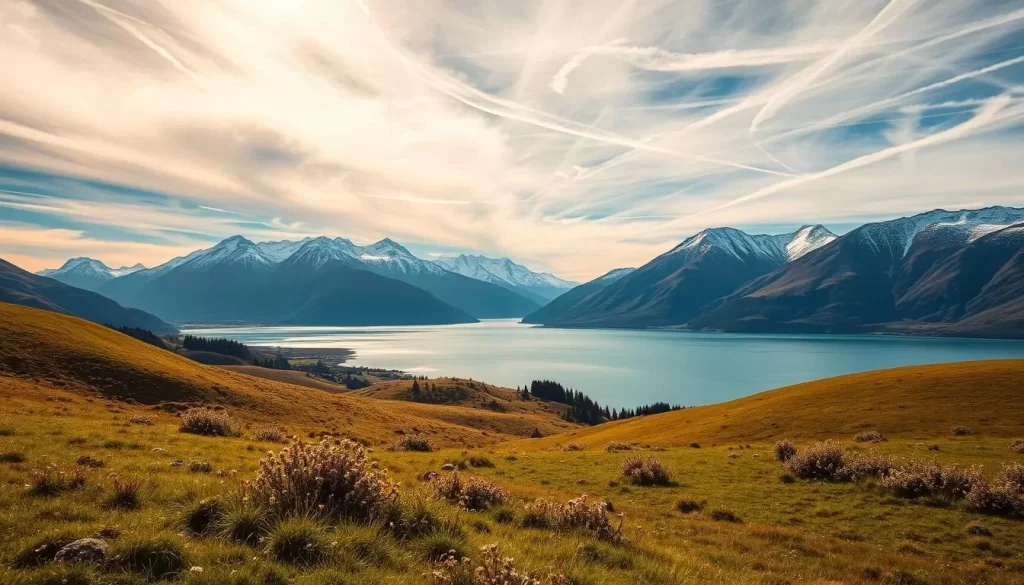
North Island vs. South Island: Key Differences
The North Island boasts a warm, subtropical climate, perfect for beach outings and outdoor activities. Auckland, for example, enjoys mild winters and warm summers, with average July temperatures around 59°F (15°C). In contrast, the South Island features cooler, alpine conditions. Queenstown sees summer temperatures around 70°F (21°C), with only 29 inches of rain annually.
Coastal areas like Wellington and Christchurch enjoy mild weather year-round. Wellington’s temperatures rarely exceed 77°F (25°C) or drop below 39°F (4°C). These differences highlight the importance of choosing the right place based on your weather preferences.
City-Specific Climates: Auckland, Rotorua, Wellington, and Queenstown
Each city offers a unique weather experience. Auckland’s coastal location ensures mild temperatures, while Rotorua’s geothermal activity creates a humid, subtropical environment. Wellington, known for its windy conditions, enjoys a temperate climate. Queenstown, on the other hand, is cooler, with winter temperatures ideal for snow sports.
Here’s a quick comparison of city climates:
| City | Climate | Highlights |
|---|---|---|
| Auckland | Subtropical | Mild winters, warm summers |
| Rotorua | Humid subtropical | Geothermal activity, lush landscapes |
| Wellington | Temperate | Windy, mild year-round |
| Queenstown | Alpine | Cool summers, snowy winters |
By understanding these micro-climates, you can plan activities that align with the weather in each region. For example, Fiji’s dry season offers similar warm conditions, while Montserrat’s dry season provides lush landscapes and fewer crowds. These insights ensure you make the most of your trip.
Seasonal Festivals and Cultural Events
Immerse yourself in the vibrant festivals and cultural events that define the spirit of this island nation. Whether you visit during summer or winter, there’s always an activity or celebration to enjoy. These events reflect the rich heritage and outdoor lifestyle that make this destination unique.
Signature Events During Summer and Winter
Summer is a lively time for festivals and outdoor gatherings. Waitangi Day, celebrated in February, marks the signing of the Treaty of Waitangi and features cultural performances and traditional Māori ceremonies. The ASB Classic Tennis tournament in Auckland also draws crowds, offering world-class matches and entertainment.
Winter brings its own charm with events like the Matariki Festival, celebrating the Māori New Year with cultural performances and feasts. The Queenstown Winter Festival in July is another highlight, featuring snow sports, live music, and family-friendly activities.
Here are some key events to plan your visit around:
- Summer: Waitangi Day, ASB Classic Tennis, and outdoor music festivals.
- Winter: Matariki Festival, Queenstown Winter Festival, and Beervana craft beer celebration.
These festivals offer a glimpse into the local culture and traditions. For example, for, with events like the Auckland Arts Festival showcasing music, art, and food.
Whether you’re planning a holiday or seeking a cultural experience, this guide will help you explore the world of festivals and events. From summer beach parties to winter snow celebrations, there’s something for everyone to enjoy.
When to Hike, Beach, and Explore New Zealand
Exploring the great outdoors is a must for any visitor. Whether you’re trekking through scenic trails or soaking up the sun on pristine shores, timing your activities can make all the difference. Let’s break down the best time for hiking and beach outings to ensure an unforgettable experience.
Best Months for Hiking and Outdoor Adventures
For hiking enthusiasts, late spring and early autumn are ideal. During these months, temperatures range from 12°C to 20°C, providing comfortable conditions for long treks. Popular trails like the Abel Tasman Coast Track are less crowded, allowing you to enjoy the serene beauty of national parks without the hustle.
If you’re planning a multi-day hike, consider the Tongariro Alpine Crossing. This 19-kilometer trail offers stunning volcanic landscapes and typically takes 6-8 hours to complete. Round-trip shuttles cost around 60 NZD, making it an affordable adventure.
Optimal Time to Enjoy the Beaches
Summer is the perfect time for beach lovers. With temperatures ranging from 18°C to 24°C, you can enjoy warm, sunny days by the water. Popular spots like Piha Beach and Mount Maunganui are bustling with activity, offering opportunities for swimming, surfing, and beachside BBQs.
For a quieter experience, visit during late summer or early autumn. The weather remains pleasant, and the crowds thin out, giving you more space to relax. Whether you’re planning a day trip or a longer stay, the beaches here are a must-see.
By understanding the seasonal trends, you can plan your travel to align with the best conditions for hiking and beach outings. For more tips on exploring this destination, check out this comprehensive travel guide.
Conclusion
Choosing the right season for your adventure ensures you make the most of every moment. Whether you’re drawn to summer beach days or winter ski trips, each time of year offers unique attractions. Understanding regional climate differences, from the North Island to the South Island, helps you tailor your plans to match your preferences.
Planning your trip during shoulder seasons like spring or autumn can help you avoid crowds and enjoy pleasant weather. For budget-friendly options, consider off-peak dates when travel costs are lower. Every region has its charm, whether it’s the mild temperatures of coastal cities or the alpine landscapes of the south.
Use this guide to plan a personalized adventure that suits your interests. For more tips on exploring this destination, check out this comprehensive travel guide. With careful planning, you’ll create unforgettable memories in every place you visit.
The above is subject to change.
Check back often to TRAVEL.COM for the latest travel tips and deals.
Here are some Tours & Sightseeing suggestions that might pique your interests!
